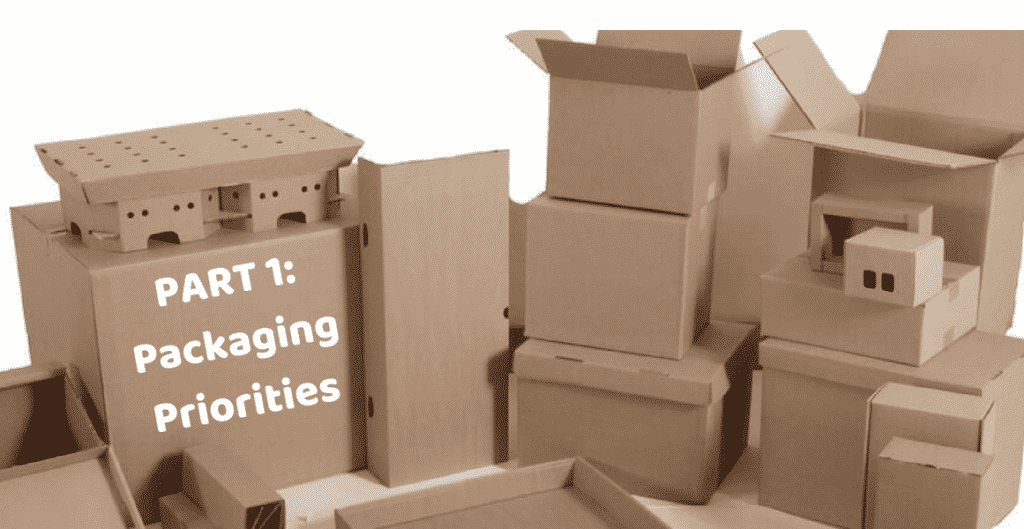In 2019 alone, Kickstarter saw over 10,000 project launches. Yes, you’ve read the thousands of articles on how to launch your Kickstarter project. But the question remains: with that many projects, how do you stand out from the crowd?
Here’s a list of 9 things you can do to set your Kickstarter apart from the competition, get noticed and get funded.
1. Be a member of the Kickstarter community
Kickstarter is a tight-knit community that’s built around a passion for bringing ideas to life. When it comes to crowdfunding, it’s not just about you. But rather, it’s about the group and its success as a whole. If you’re going to Kickstarter to get people to back your project without ever having backed a campaign yourself, you’ve completely missed the point of the platform.
As you contemplate your own launch, back and thoroughly study other successful projects on Kickstarter. Not only will you quickly become a part of the community, but it’s also one of the easiest ways to prep for your own launch. Research from Kickstarter shows that successful Kickstarter creators have backed about 4x as many projects than unsuccessful creators. Let this be you.
Look at your category and niche – what are people excited about and what are absolute no-nos? There’s really no need to reinvent the wheel when it comes to your campaign so study those winners and model what works.
2. Present more than just an idea
Kickstarter works best for those who have a clearly defined project and have already taken steps towards making that a reality. The more you can show that you’ve been working on the project and how far you’ve come, the more people will trust you to deliver on your promise of a product. If you look through the numerous pages of unsuccessful projects on Kickstarter, you’ll see that many of them were half-baked ideas rather than real projects.
3. The process is the marketing
Oftentimes I talk to creators and they’re afraid to share anything behind the scenes. They hesitate to open up to anything below “perfection” when they see big brands roll out polished images and carefully curated content. While that might be great for big brands, it’s awful for crowdfunding.
With a crowdfunding campaign, always remember that the process is the marketing. Diehard fans of Kickstarter are early adopters at heart; they’re not afraid to see the early drawings, they’re not afraid to see wires and broken PCBs, they’re not afraid to see you struggle getting the seams just right. On the contrary, this is the stuff that excites them and draws them to your story, your vision, and your project. Bare all to them and show off what it takes, what it really takes, to bring an idea to life.

4. Ace the campaign before the campaign
Some people make the mistake of launching even before they have an audience. They think that the 30-60 days of a campaign is all that it takes to be successful. Little do they know that there’s actually a secret campaign even before the public Kickstarter launch. In this “campaign before the campaign”, you must build a following and forge relationships. This will ensure that you do not launch to crickets.
5. Listen to feedback and make changes
Feedback, although frustrating at times, is incredibly important for progress. This is especially true when you’re working with something completely novel. In this case, the more feedback you receive, the better it’ll be for you in the long run. Ask people what they want to see for rewards (a single pack? A double pack? A triple pack?) and show them your Kickstarter preview page (is this section clear? How is this GIF?). By doing this, you’ll be able to get feedback and make changes to create something that has the highest chance of success.
6. Make your launch a coveted event
The most successful Kickstarter projects usually completely crush their goal on Launch Day. They ace the campaign before the campaign (see #3). They build up enthusiasm and excitement for their audience. They make Launch Day a big party that everyone wants to attend. No, I don’t mean a physical party, but rather an online party where everyone can’t wait to get to your page and click to pre-order.
Think back to the last event you attended. What do you think made that event so successful? It probably had a definitive start and end date that was greatly anticipated and promoted in advance. It probably offered opportunities for participation, connection and maybe some fun surprises. If also probably offered opportunities for people to participate as much as they wanted to. And lastly, it was probably a ton of fun.

7. Ace your storytelling skills
People tend to want to support projects from creators they know, like and trust. So your main job for your campaign is to build a relationship with your audience and get them excited about your launch. The best way to do that? Through stories. People have been drawn to stories ever since the dawn of time. We all grow up with stories, we tell each other stories everyday through conversation, and we also immerse ourselves in story through the books we read and the movies we watch. Set your Kickstarter apart from the competition by telling relatable stories about why you’re here, why you’ve created your project, and what you envision for the future.
8. Plan for the Valley of Death
A crowdfunding campaign has three key phases: (1) beginning excitement, (2) middle lull, and (3) the final push. Many campaigners prepare for the big Launch Day and are excited as the funds start pouring in. Once the excitement fades, funding and momentum slows down to a grueling halt before a big push at the end. True that it’s important to plan a big Launch Day, but it’s also equally important to plan a steady stream of content, updates, new rewards, and opportunities to keep the momentum going through the Valley of Death in the middle of the campaign.
9. Focus on content and delivery
Kickstarter campaigns happen in the online world. As such, there’s no way people can physically see, touch, feel, smell or experience the product. That’s why content is so critical to the success of your campaign. And since everything happens online, your content needs to be multimedia in nature to get people as immersed into your project as possible. The most successful projects take a holistic approach to content and offer everything from articles to video to interviews to testimonials to demos to podcasts to social campaigns and more. The goal here is to help your audience look at your product from every angle, use case, and benefit to convert them into a backer.
10. Create a product that solves a pain point very well
At the end of the day, the best way to set your Kickstarter apart from the competition is to create a product that solves a pain point well. Projects that end up being wildly successful solves a pain point for a very dedicated niche, rather than aim for the masses. Yes, maybe your product can be used for this, or maybe this other group can also use your product, but I encourage you to stay true to your course. If you don’t, you’ll end up changing your product bit by bit to appeal to everyone, but end up pleasing no one.
Since there’s no way to please everyone, focus on those who matter most to you and your idea. Think back to why you created your product, what the pain point was that caused you to envision it in the first place, and use that as your source of truth. By solving a problem well for one niche, others will be sure to take notice.

Now that you know the secrets to set yourself apart from the thousands of other projects, it’s time to act. Get out there and launch!

Nalin Chuapetcharasopon helps people bring products to market using Kickstarter and Indiegogo. Since 2015, she’s worked with entrepreneurs and businesses to raise over $7 million. As Founder of Crush Crowdfunding, she offers no-BS strategies, marketing resources, and campaign tactics to get products launched and funded.
You’ve done everything by the book. Your Kickstarter campaign is almost ready to launch.
You made a great product. Built an audience. Set up a campaign page.
But how do you ship it?
We put this checklist together to help you get started. It's free.





